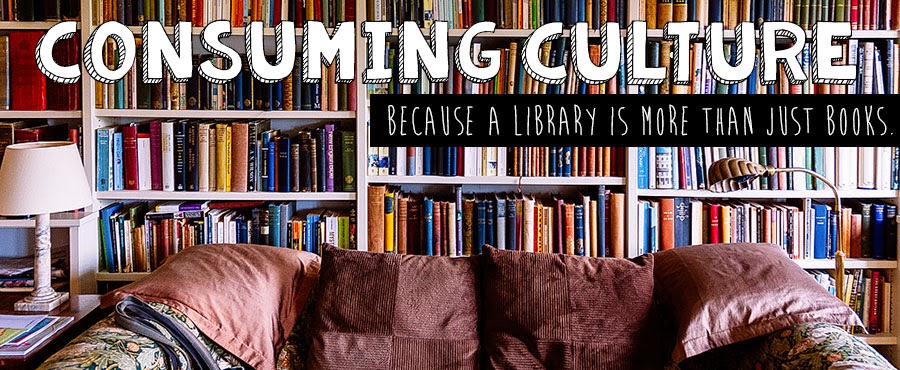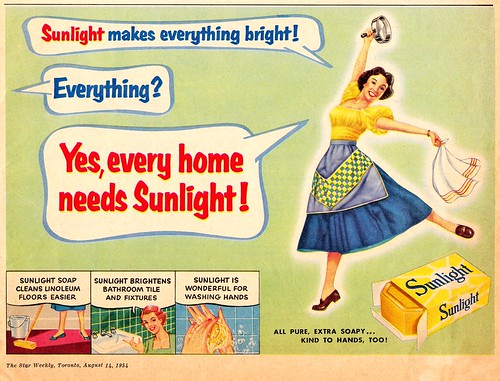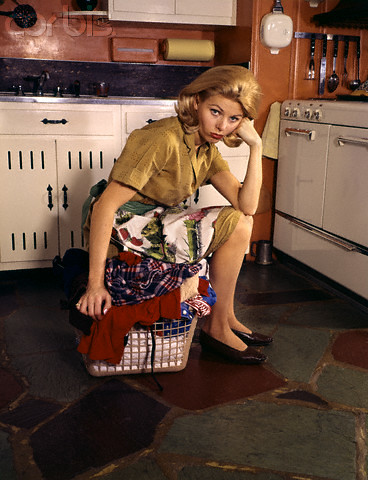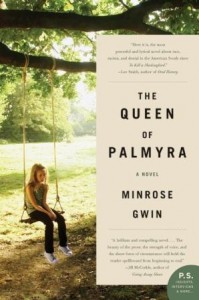 While Part One of Gail Collins' When Everything Changed described what life was like for women in 1960 before liberation, Part Two is aptly titled "When Everything Changed." This was a really long section, filled with TONNNNNNS of information.
While Part One of Gail Collins' When Everything Changed described what life was like for women in 1960 before liberation, Part Two is aptly titled "When Everything Changed." This was a really long section, filled with TONNNNNNS of information.Change was swift. Collins points out that in the election of 1960, despite growing discontent, the majority of women still voted with the men—"on the basis of class, ethnicity, or regional loyalties." However, women were slowly forcing their way into Washington administration, and they finally organized behind the Equal Rights Amendment, a proposed amendment to the Constitution that would guarantee equal rights for women under federal, state, and local law. What followed were several organizations that formed to help pass and ratify the ERA—the National Organization of Women (NOW), the Equal Employment Opportunity Commission (EEOC), the Women's Bureau (as well as the organizations founded as part of the Civil Rights Movement, many of which were led by women). However, the men in Washington didn't take the women too seriously. One of the best anecdotes in this book so far, and one that proved to have quite an impact, came from a hearing on sexism in the hiring of flight attendants (who were hired based on looks, size, and marital status). A New York representative asked the flight attendant to "stand up, so we can see the dimensions of the problem." As the airline industry defended their standards, one woman House representative demanded, "What are you running, an airline or a whorehouse?"
 |
| Side note: Isn't it ironic how women fought against these objectifying uniforms, yet now girls wear them as Halloween costumes? |
But when you think of the 60s and 70s, chances are you're not thinking of economics; you're thinking of Go-Go boots, free love, and radical women's lib. And I'll give you one guess as to the most revolutionary development for women to date. I hope you got this one. It's pretty big.
Birth control.
Or, as The Economist defined it in 1999, "...[the] one invention that historians a thousand years in the future will look back on and say, 'That defined the twentieth century.'"
Suddenly, babies wouldn't pull a women out of the workforce, and she could potentially have as satisfying of a sex life as a man without worrying about getting pregnant. Well, hellooooo freedom! While women still wanted marriage and motherhood, they figured out they could have a career too. It was quite a morality boost for women, one that put them on an equal playing field as men. They took control from the men and proved they could set the standard and have just as much sex if they wanted (a 1972 survey of eight colleges found that less than a quarter of women in their junior year were still virgins). Further, women began to focus on their own health and bodies (with the famous Our Bodies, Ourselves) and focus on appearance for their own self-image, not to impress a man.
And beyond the sexual revolution, it was just a time of expansion and freedom. The cost of living was very low, so people weren't trapped by a day job. Travel was cheap. Young people had the means and the drive to reinvent the world. One thrift-store shopping hippie determined the whole purpose behind the creativity was to avoid "looking like our parents." Messages from the post-war era were reversed; a message against Vietnam urged "Girls say yes to boys who say no!" and "society [had] begun to make it as rough for virgins...as it once did for those who had affairs before marrying." A new wave of feminists (with Gloria Steinem as their mascot) were more radical, more loudly heard, and viewed that first wave that included Betty Freiden as "timid and passe."

The major theme I've picked up from this history lesson so far—and one that is so universal—is that everything has a cause and an effect. First, there's a backlash to tradition. Then, there's a backlash to this feminist/social revolution (which I haven't really gotten to in this book yet; I just know it's coming). Collins summarizes this national sentiment in what I've found to be the most underline-worthy passage of the book:
"The civil rights battles of the 1960s went to the core of the nation's identity, forcing the country to grapple with the fact that it had never lived up to the standards it set for itself in the Declaration of Independence...As a result, young people became more skeptical about the wisdom of traditional cultural rules. Americans grew extremely sensitive to questions of fairness, and that opened the way for other discriminated-against groups, including women, to demand their rights."
So there it is. Economics and a mental shift, among the many factors, created "the perfect storm" for social change. It's so easy to see and understand all of this now, in reflection. I have to wonder what was running through an average individual's mind during all of this.



















